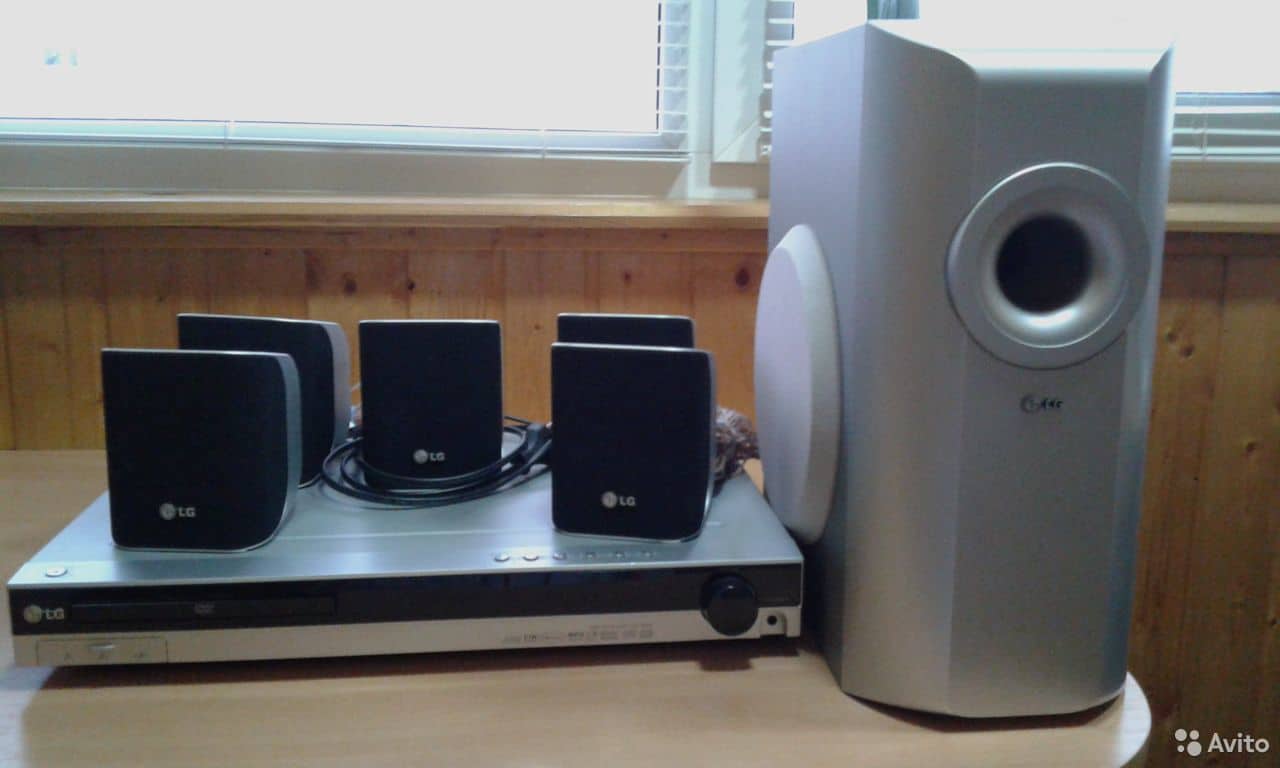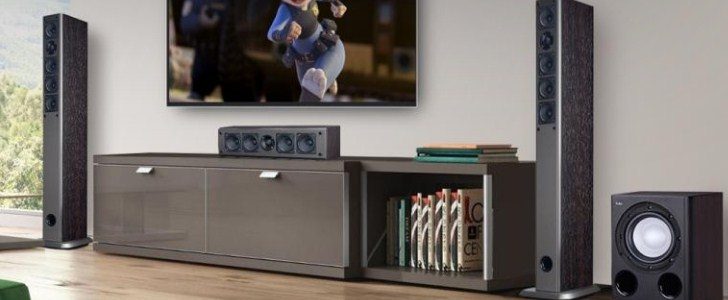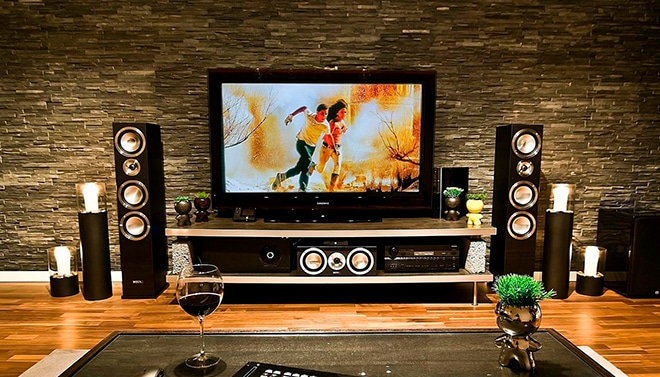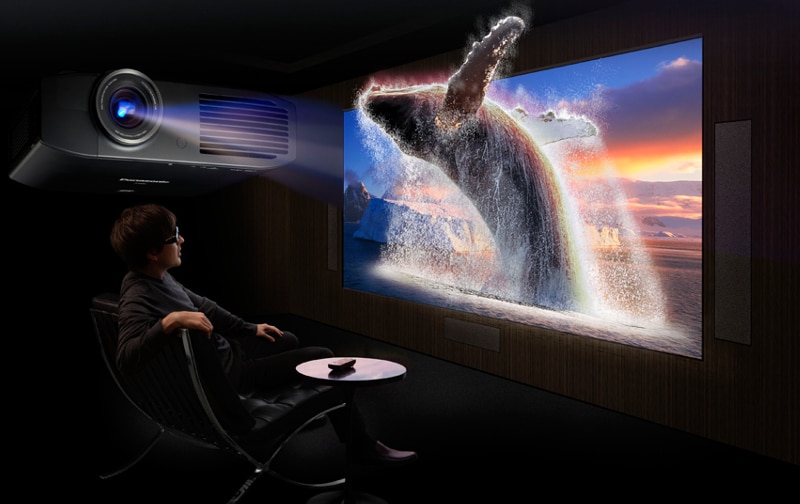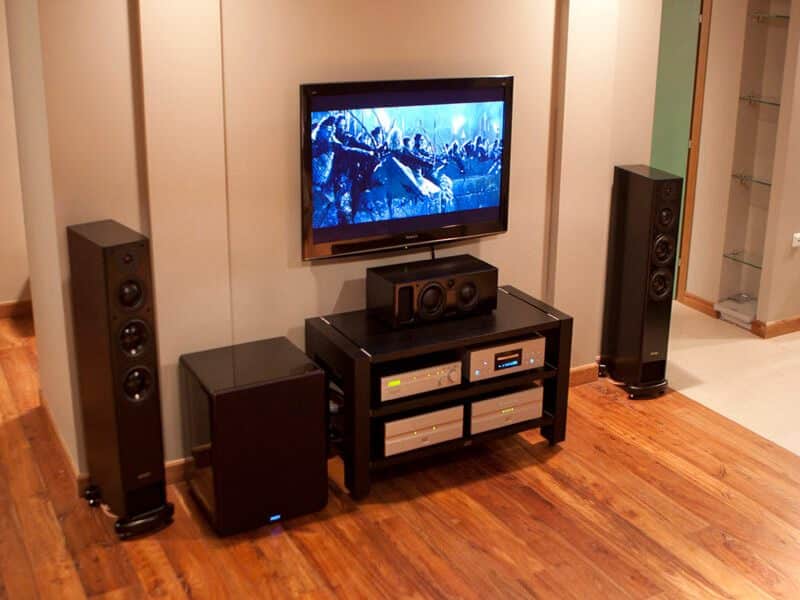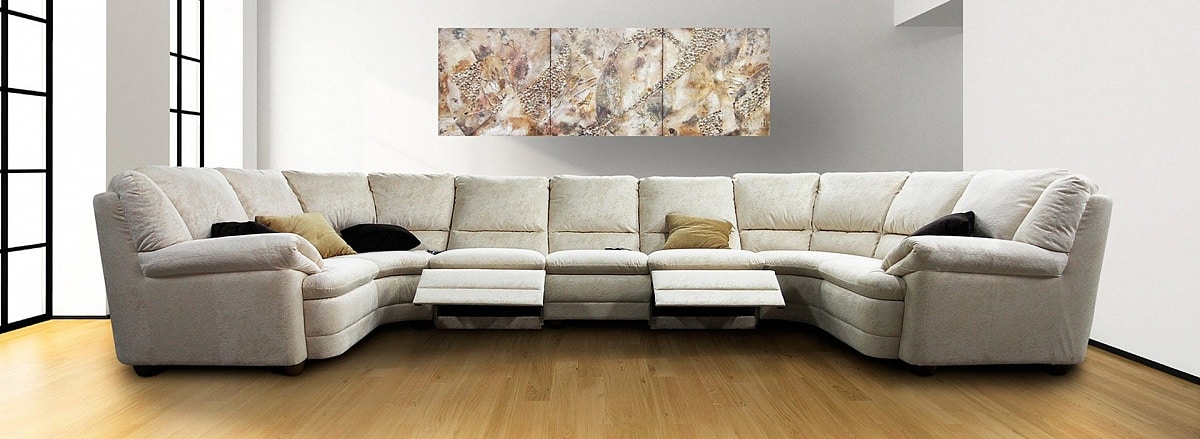Everyone can immerse themselves in the atmosphere of their favorite movies even at home. A set of special equipment, which is responsible for high-quality video and sound reproduction with the so-called “effect of presence”, will help. As you already understood, today we will focus on home theater: types, functionality, its components and the main selection criteria.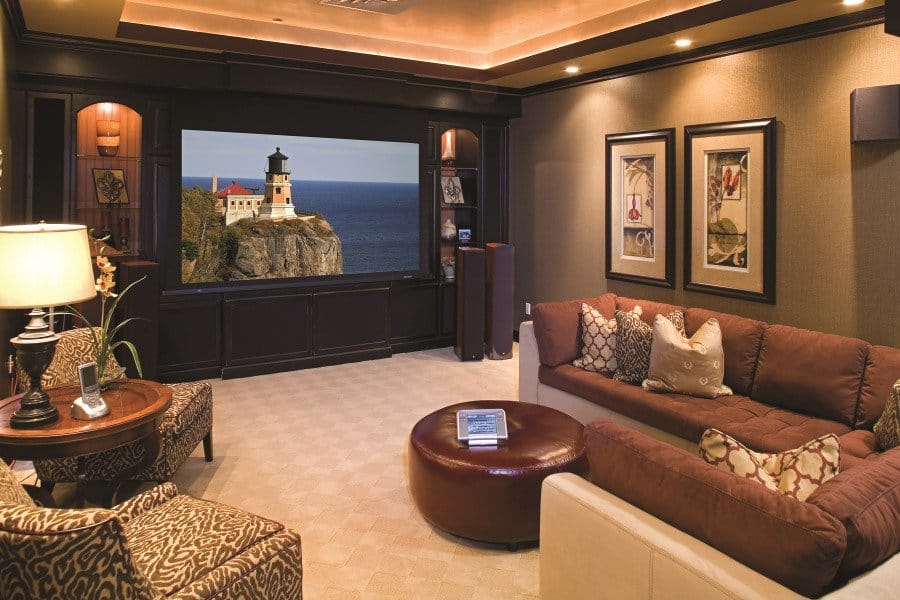
Home theater: concept and types of acoustic systems
So, under a home theater it is customary to understand a complex of special sound and video reproducing equipment (consumer class), which is intended for installation in private residential premises. Its main task is to reproduce high-quality sound and images, close to the cinema. In the rubble technology market, we are faced with a variety of types of systems. Let’s conditionally divide them according to four criteria:
- The method of selection of home theater components.
- The number of components.
- The way it is placed in the room.
- Connection type.
So, the division into types of home theaters:
- According to the selection method, home theaters are divided into prefabricated systems and closed-loop systems, or so-called “in one box” systems.
- Closed-circuit home theaters are ideal for those who save their time and are not ready for prolonged listening or clarifying connections between components. Choosing a system “in one box” you can find your ideal option without much effort.
- Prefabricated home theater systems are meant for those who are more picky about the quality of their equipment. In this case, the user has the right to independently choose each element – take into account the power and quality of reproduction, the surround sound effect, cost, manufacturer and much more.
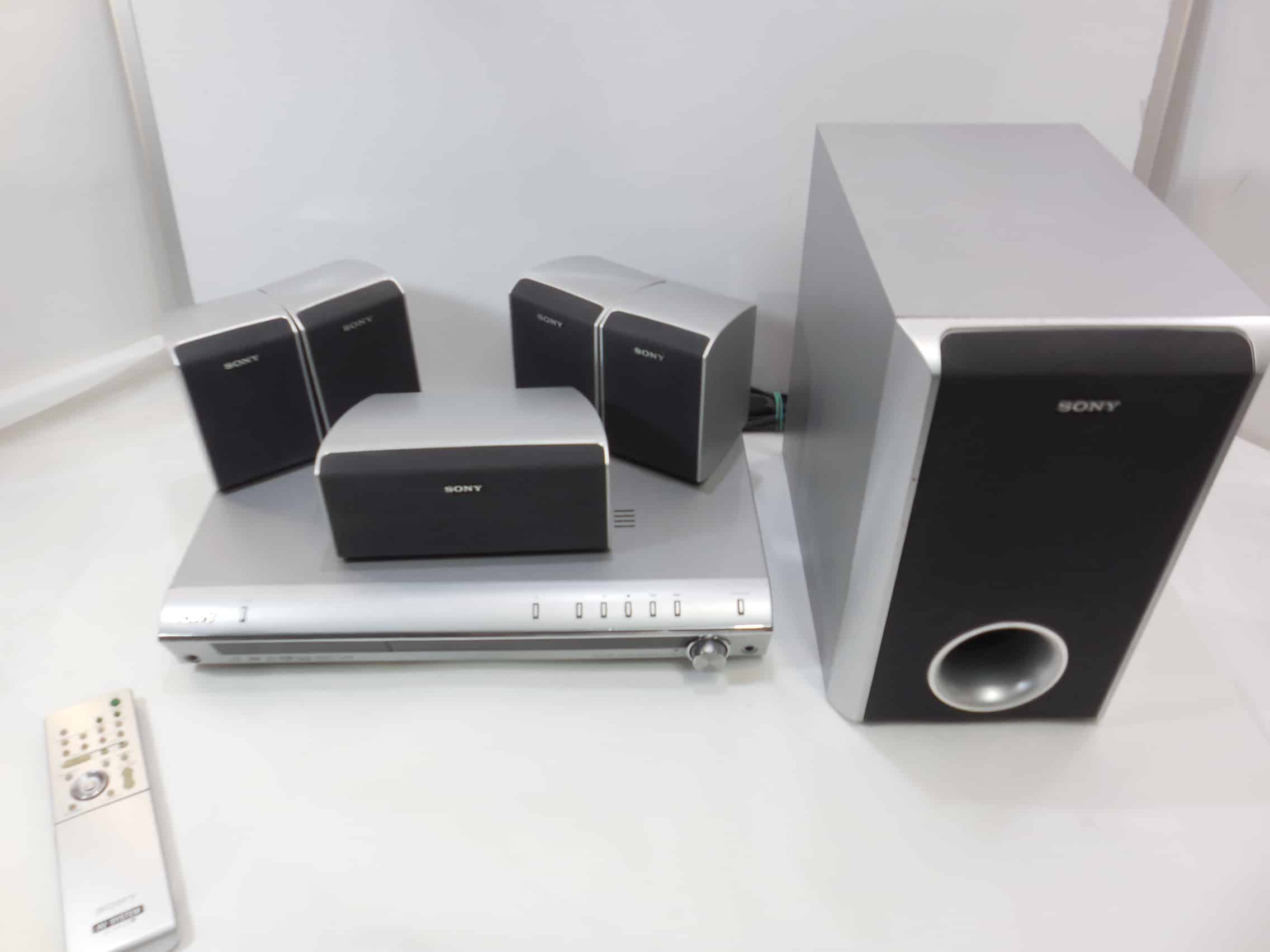 Sony Prefabricated Home Theater [/ caption]
Sony Prefabricated Home Theater [/ caption]
- By the number of components, home theaters are divided into multi-link, soundbars and monoblocks.
- Multilayer systems will provide the highest sound quality but take up a lot of space. We explain this by placing the elements in a strict order around the entire perimeter of the room. As a result, we obtain optimal reflection and propagation of sound waves.
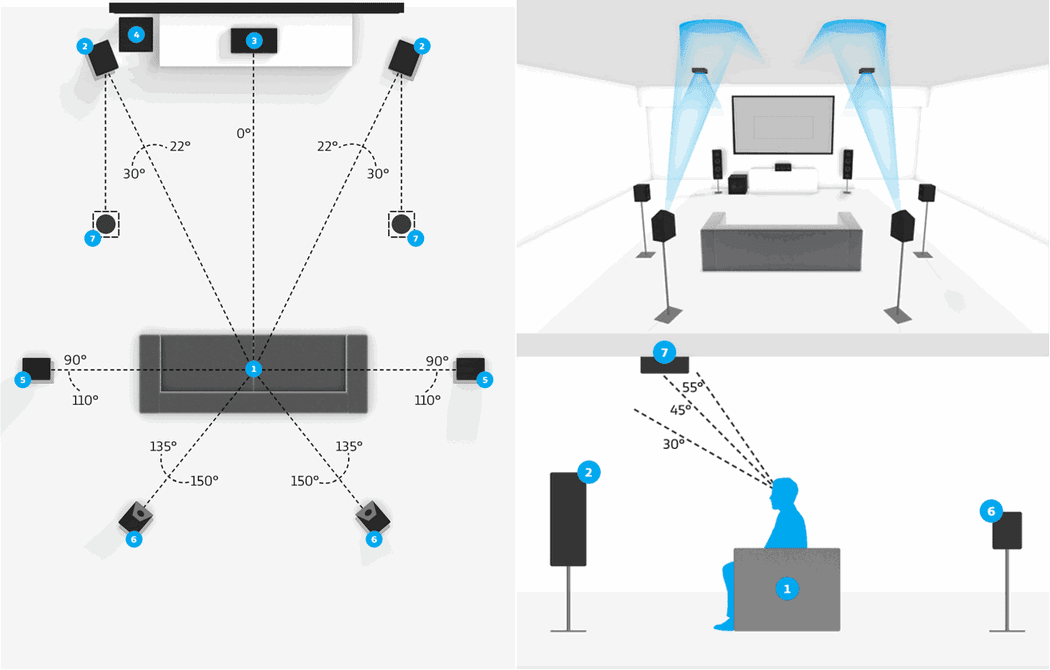 7.1 home theater – connection diagram that will occupy all the space in the house / room [/ caption]
7.1 home theater – connection diagram that will occupy all the space in the house / room [/ caption] - Soundbars combine a subwoofer and a versatile speaker. They will not take up much space, but they will not provide maximum sound volume either. Although it is very difficult for a user without a fine, sensitive hearing to understand the difference.
 LG SN11R soundbar supports Smart TV and Meredian technology [/ caption]
LG SN11R soundbar supports Smart TV and Meredian technology [/ caption] - The sound of monoblocks is often comparable to the sound of soundbars.
- Multilayer systems will provide the highest sound quality but take up a lot of space. We explain this by placing the elements in a strict order around the entire perimeter of the room. As a result, we obtain optimal reflection and propagation of sound waves.
- According to the type of equipment placement, home theaters are divided into built-in, floor-standing, shelf and suspended.
- Embedded systems are generally the most expensive; but they look organic and rather laconic. Here we take into account the interior design and any design constraints.
- When choosing between floor-standing, shelf and hanging speakers , we also take into account the specifics of furniture, the presence of children, animals, etc.
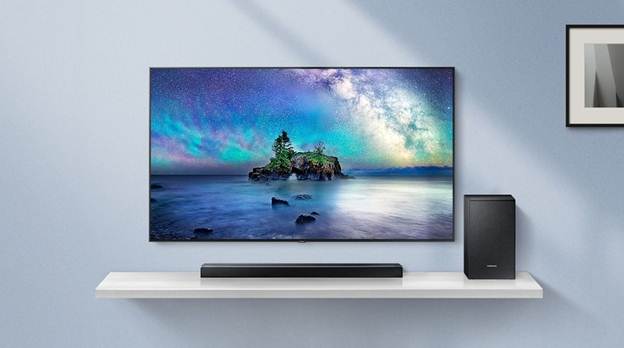 Shelving home theater placement on the shelves [/ caption]
Shelving home theater placement on the shelves [/ caption]
- By the type of connection, we distinguish between wireless and wired systems.
- In the case of wireless speakers, the connection will be via Bluetooth, which is very convenient.
- Having a wired system , we connect all the components using a cable.
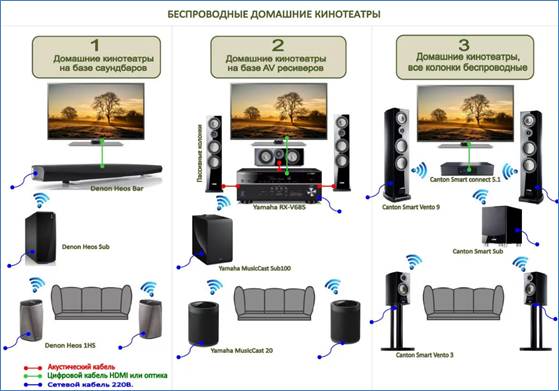 Wireless home theaters [/ caption]
Wireless home theaters [/ caption]
Note! In some cases, the rear speakers can be made wireless. To do this, we connect the wired speakers to a wireless adapter with an amplifier.
Functionality of modern home theaters
Despite the variety of types, the functions of various home theaters are quite similar. The main ones are:
- high quality surround sound reproduction;
- high quality video playback;
- playback of various formats;
- simple, comfortable control.
Sound
The surround sound of movies is perhaps the main reason for purchasing a home theater. The rich, realistic sound leaves an indelible impression and creates the effect of presence, the effect of immersion in the motion picture. The following components are responsible for high-quality sound:
- variety of playback modes;
- the presence of a muted mode;
- the presence of a viewing mode in headphones;
- the ability to adjust the sound manually.
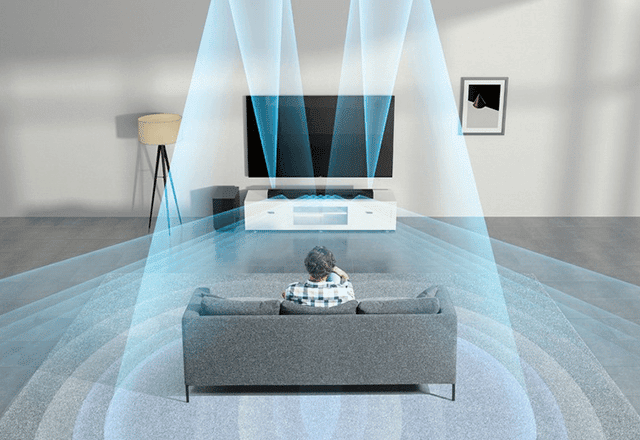 Surround sound is the main feature of home theater [/ caption]
Surround sound is the main feature of home theater [/ caption]
Picture coming from DC
High-quality image reproduction is the task of the TV screen. To obtain the optimal effect, adjust and adjust the following parameters:
- brightness, saturation and contrast of the image;
- scale.
HD, FHD and HDTV functions are important.
Playback
The next option is the ability to play videos of various formats (CD, DVD, Blu-ray, etc.). Some legacy models only work with one of the options.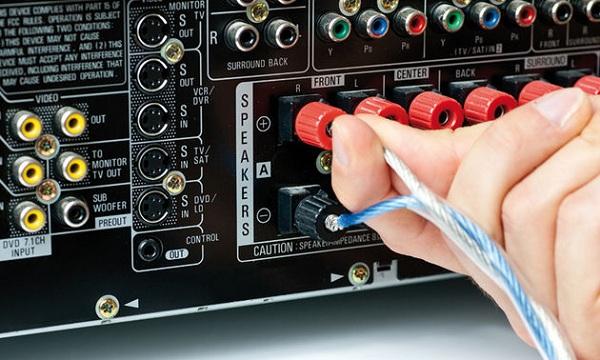
Control
An equally important option is playback control. This includes stopping, accelerating, rewinding, enlarging the image.
Note! Only with a complete set of equipment are all home theater options feasible.
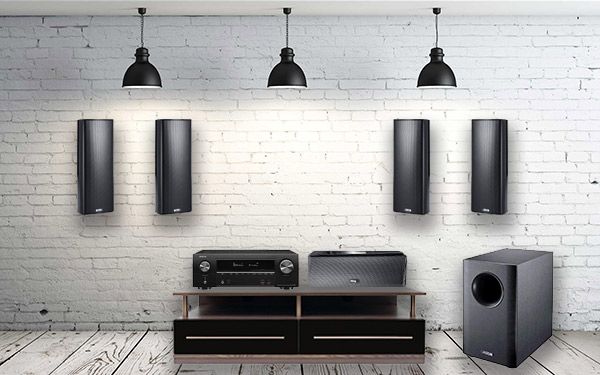 In the photo there is a home theater with karaoke function, which allows you to diversify your leisure time [/ caption]
In the photo there is a home theater with karaoke function, which allows you to diversify your leisure time [/ caption]
Additional functions
Additional options for home theaters include:
- Sound calibration . Used for the best sound quality. Calibration involves automatically reading the natural acoustics of the room and distributing the sound reflection.
- HDMI connectors . Additional inputs are never redundant. They can be used to connect more speakers or a game console.
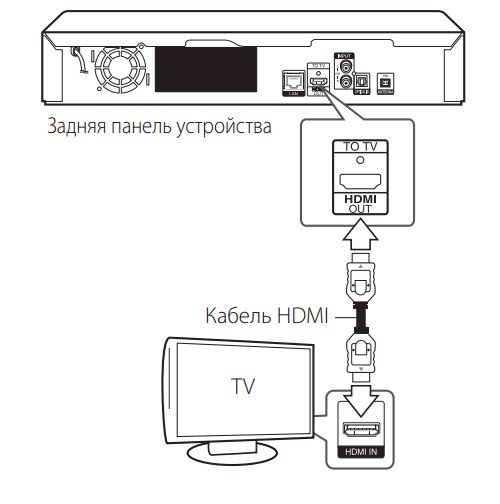 HDMI cinema connectors [/ caption]
HDMI cinema connectors [/ caption] - Support for 3D format . This feature is typical for premium home theater systems. 3D glasses are usually also included. But it is recommended to purchase new ones of higher quality.
- IPlayer option . Used for online streaming.
- Parental control . Useful for those who have children.
- External interfaces , etc.
Home Cinema Components
Now let’s take a look at the main elements of home theaters:
- One of the main ones is the display device. This refers to a TV, liquid crystal or plasma panels . If a separate room is allocated for the recreation center, there is a desire to create a semblance of a real cinema at home – you can purchase a screen and a projector.

- The next component is the signal source . In this capacity, the signal of the television provider is used; CD, DVD, Blu-ray, HD players; set-top boxes on the Android platform, Apple TV; or even a PC.
- AV receiver for signal conversion.
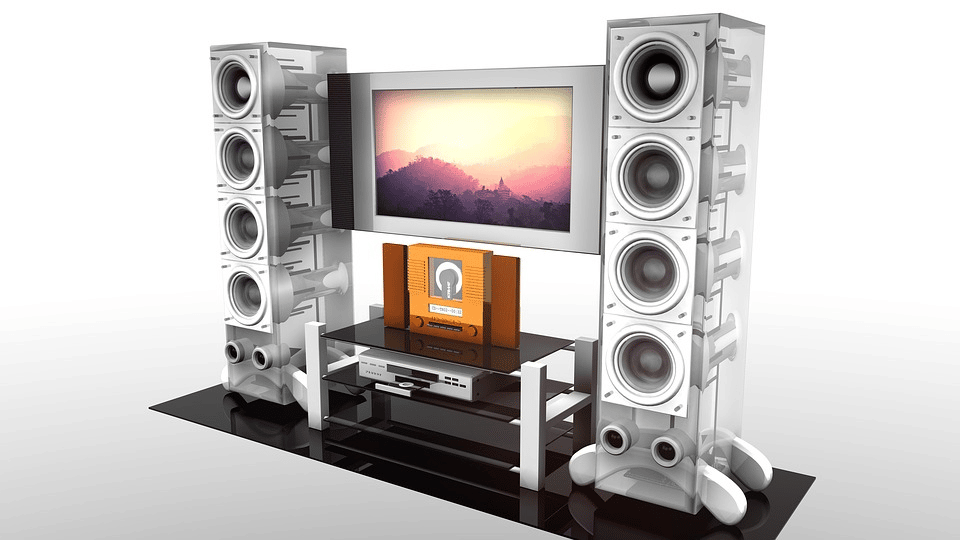
- Acoustics . It can consist of elements such as a center speaker, front speakers, speakers, a subwoofer.
Note! It is recommended to purchase loudspeakers from the same manufacturer that have the same sound tone. In this case, the sound will be better.
In turn, most home theaters in one box consist of speakers (5.1 or 7.1 speakers) and a Blu-Ray or DVD receiver.
Home theater specifications
One of the most important criteria for evaluating DK equipment is its technical characteristics.
Projector
When choosing a projector, opt for a high-resolution matrix technology. After all, the higher the image resolution, the clearer and better the picture. The maximum of the existing ones is 4K. The maximum diagonal is 100 inches (254 cm). Commonly used matrices are DPL and LCD. The first type is more expensive and produces a fairly high-quality image. Often equipped with 3D function. The second one is more budgetary both in price and quality. When buying a projector, the lamp of the device is not without attention. We clarify its power and contrast.
Television
For home theaters, experts recommend using OLED and LCD panels. The first type is recognized as the highest quality. It has a high screen resolution, it compares favorably with others in contrast, brightness, and a large angle of inclination. Equipped with 3D option. LCD TVs are more affordable. The cost is also reflected in the quality of the picture, the speed of the TV’s response to the user’s commands. The recommended minimum TV size is 32 inches.
Note! Most modern TVs already have a built-in operating system. Thanks to this, it became possible to install new third-party applications, including online cinemas, and download games without any difficulty.
Acoustics
As noted earlier, acoustics is one of the defining components of home theater. One of the most common types of speaker systems is 5.1 format, where 5 means the number of speakers, 1 means a
subwoofer .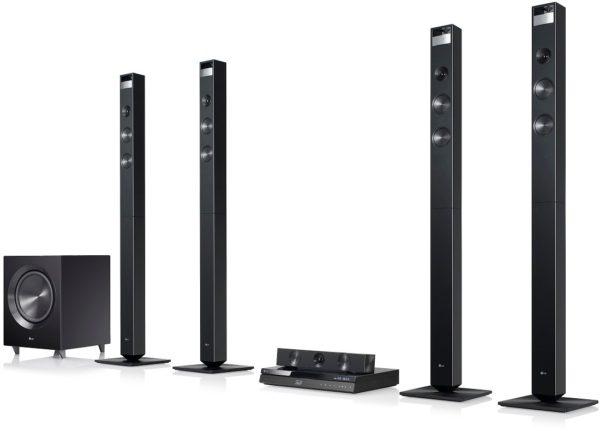 It is recommended to distribute all speakers in the corners of the room. For connection – use wireless interfaces. If this is not possible, a wired connection is used. We also pay attention to the power of the speakers.
It is recommended to distribute all speakers in the corners of the room. For connection – use wireless interfaces. If this is not possible, a wired connection is used. We also pay attention to the power of the speakers. Placing the user and home theater elements in the room [/ caption] The most popular supported audio formats: Dolby Digital, Dolby True HD, DTS, Dolby Digital Plus, Multichannel PCM. Common speakers: OmniJewel, Jewel Cube, Reflecting Series. What technologies are used in modern home theaters – basic audio terms for home theater: https://youtu.be/eBLJZW08l1g
Placing the user and home theater elements in the room [/ caption] The most popular supported audio formats: Dolby Digital, Dolby True HD, DTS, Dolby Digital Plus, Multichannel PCM. Common speakers: OmniJewel, Jewel Cube, Reflecting Series. What technologies are used in modern home theaters – basic audio terms for home theater: https://youtu.be/eBLJZW08l1g
Playback
A wide variety of devices can be used for playback. A list of them is given above. Also, thanks to modern technology and wireless connectivity, you can broadcast the image directly from your phone or tablet.
Assembly features
Let’s move on to assembling all home theater components.
Projector
And if, in principle, everything is clear with the installation of the TV, then the installation of the screen and the projector may raise some questions. Most often, both of these devices are mounted directly to the ceiling. If the screen size is small and has an appropriate design, it is mounted to the wall. The height of the mount is also determined by the dimensions of the reflective surface and the room. The formula for the calculation is as follows: VM (mounting height) = VSP (vertical offset of the projector, see instructions) * HV (screen height).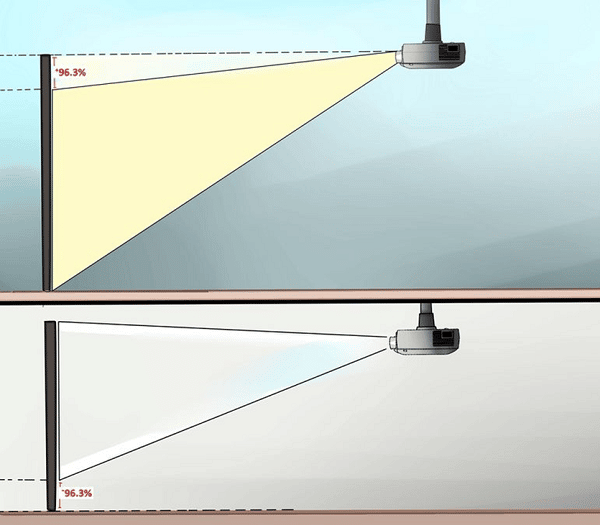 Vertical offset of the projector [/ caption] And in order to calculate the optimal distance between the projector and the screen, we use the formula: PR (projection distance) = SHI (screen width) * PO (projection ratio). We take the latest data from the manual for this equipment. We also pay attention to the layout of the room. The best place to install the screen is on a wall out of direct sunlight. In this case, we will get the clearest and brightest image. How to set up a home theater system – correct 5.1 speaker placement: https://youtu.be/YPsUVh8WvGw
Vertical offset of the projector [/ caption] And in order to calculate the optimal distance between the projector and the screen, we use the formula: PR (projection distance) = SHI (screen width) * PO (projection ratio). We take the latest data from the manual for this equipment. We also pay attention to the layout of the room. The best place to install the screen is on a wall out of direct sunlight. In this case, we will get the clearest and brightest image. How to set up a home theater system – correct 5.1 speaker placement: https://youtu.be/YPsUVh8WvGw
Acoustics
Each column has its own technical characteristics and its own purpose. Accordingly, it must occupy a certain place.
- Front speakers are the source of the main sound. They can work both in a stereo system and separately. They are located at the level of the ears of the seated viewer, somewhat turned towards the screen.
- The center speakers are responsible for the voices of movie characters and surround sound. They are located next to the TV screen (on the sides, above, below from it).
- The rear speakers are responsible for creating a “surround sound” experience. Placed on the sides, behind the back and above the head of the audience. U-turn to the wall is allowed.
 Placement of the user and home theater elements in the room [/ caption]
Placement of the user and home theater elements in the room [/ caption] - The subwoofer will help enhance the sound and enhance the “cinema” effect. Together with it, a satellite is used, a small speaker responsible for the mid and high frequency ranges.
 Schematic diagram of connecting a home theater with karaoke [/ caption]
Schematic diagram of connecting a home theater with karaoke [/ caption]
Important! When placing the components of a home theater, we must take into account all the characteristics of the room, the placement of chairs and sofas, cables, sockets.
Selection criteria
The main
criterion for choosing a home theater is the expected effect; we take into account the peculiarities of the interior and the permissible place for placement. Based on these expectations, we make a choice between a projector and a TV, built-in and non-built-in, wired and wireless systems.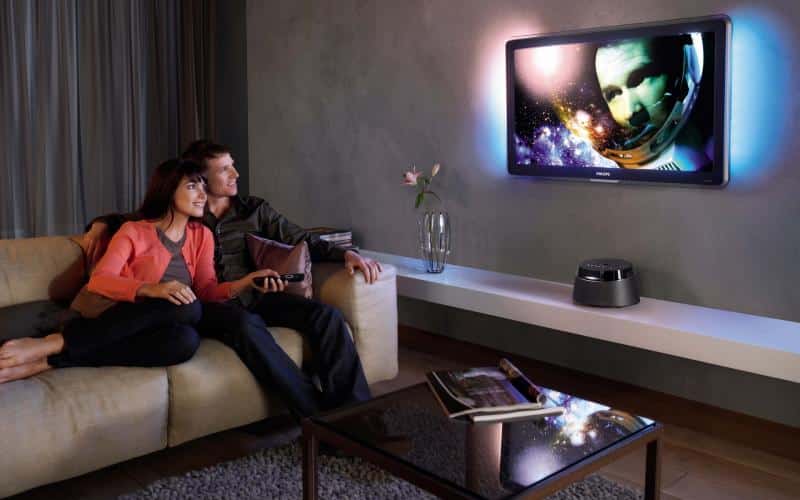 An equally important criterion is the signal reading format. This criterion is individual for each viewer. Also, according to the wishes of the user, we are determined with the necessary functions. An important point is the technical characteristics of the equipment. Here, whenever possible, each element of the ecosystem is considered separately. Home theater is a great find for moviegoers. With the correct selection and placement of components, the system will create the effect of reality, and will allow you to plunge headlong into the world of films.
An equally important criterion is the signal reading format. This criterion is individual for each viewer. Also, according to the wishes of the user, we are determined with the necessary functions. An important point is the technical characteristics of the equipment. Here, whenever possible, each element of the ecosystem is considered separately. Home theater is a great find for moviegoers. With the correct selection and placement of components, the system will create the effect of reality, and will allow you to plunge headlong into the world of films.
